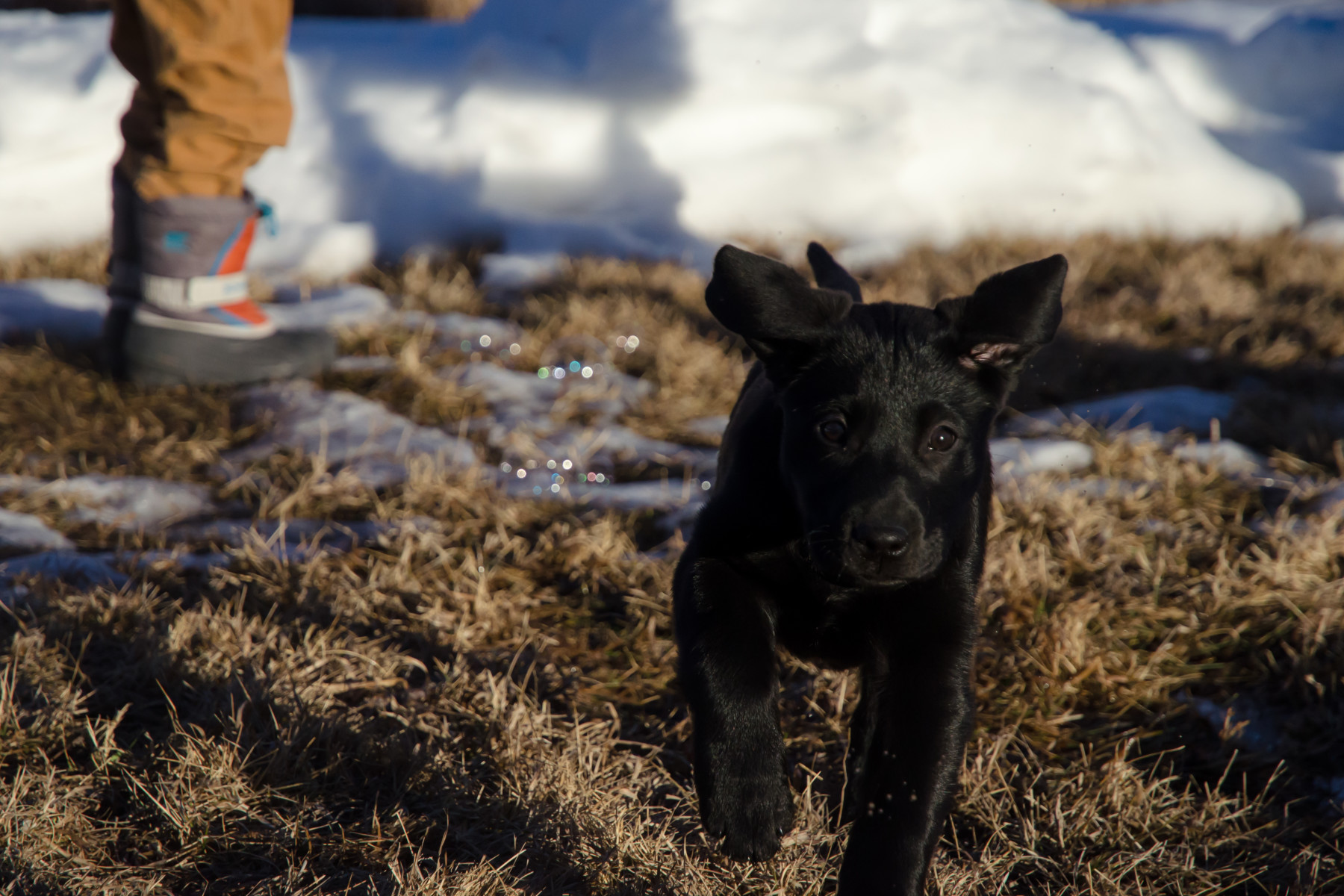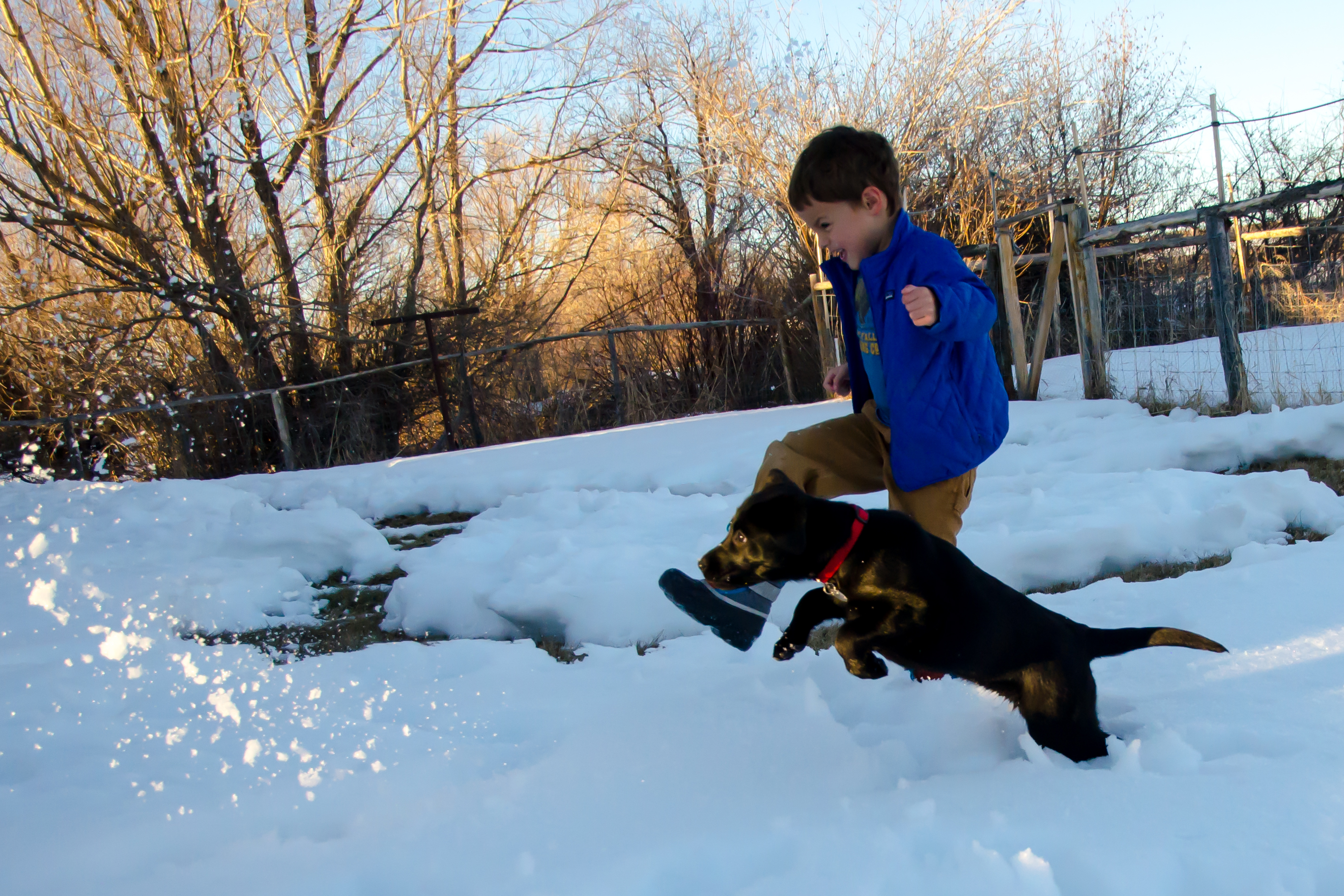It Takes A Village

Parents often tell me that having and raising kids really cemented their place in a community. They’d been disconnected from whole populations of neighbors, ignorant of critical institutions and uninvolved in many cultural rituals until the demands of parenthood thrust them into the fray. I think that might be overstating it a bit, and that maybe those folks should have gotten out a little more in their untethered days, but I can certainly relate. The intricate process of bringing up a little one inevitably leads to a certain entangled interdependence.
I’m discovering that training a gun dog isn’t entirely dissimilar on that score. Now that there’s a little lab in the house, and I’ve got to figure out what to do with her, I find myself uncovering bits and pieces of a passionate and complex gundog culture that was previously invisible to me. In some ways that immersion has been a deliberate process – I’ve been plowing through the retriever training literature, trolling the interweb for information and actively soliciting advice from friends, acquaintances and unsuspecting strangers – but largely it’s been an exercise in serendipity. Each question answered reveals five new layers to the onion and a whole host of new resources ready to help peel it.
And there is no end to the questions – Reinforce with food treats or no? Fetch for fun or only as part of a deliberately crafted retrieving exercise? What foundation should I have laid by six months? To e-collar or not to e-collar? Do we have to force fetch? What bad habits should I be most worried about inadvertently reinforcing? How do I let my kid participate without confusing the dog? For the love of God, how do I keep her from putting everything in her mouth? I’ve had the good fortune to put these, and many more, to a number of knowledgeable dog men and women. I’ll pass along the insights that they’ve generously shared here at STS in future posts. You won’t be surprised to hear though that no one is offering hard and fast “right answers”. Rather, as expected, there are varying frameworks through which a handler needs to apply his or her own judgment.
That leads me to a question for you…
What retriever / flusher training philosophy, or school of thought, do you prefer, and why?
I’m casting as wide of a net as possible in the spirit of both academic exploration and personal edification. I want to leave no stone unturned, so please share your thoughts with me at matt@stalkingtheseam.com, or better yet, post in the comments below. Your input will not only be of huge help to me personally as this process unfolds, but also promises to inform future STS content.



Great post, Matthew, thanks. I have a 3 year old black lab, my first bird dog, that led me through a similar process that you are currently embarking on it appears. I asked a lot of questions too, learned a lot and enjoyed the process. I could share all sorts of funny stories and supposedly wise observation, but I think I only have one idea that is worth telling:
When I tell folks my dog is the first bird dog I trained, I then say “and I didn’t screw her up too much”. Which gets a laugh, but is absolutely true. My one strong observation about training a bird dog is to do no harm and support your dog in developing its natural instinct, which hopefully is strong. Everything else will fall into place and you will have many, many excellent adventures together.
Good luck!
First, do no harm. That’s a really refreshing bit of insight Garrett. Thanks a bunch. I understand of course that my situation and experience aren’t unique, but it’s always particularly nice to hear it from someone who’s shared it recently.
The best dog training advice I’ve ever received is; “There’s training going on 100% of the time, either you’re training the dog or the dog is training you.”
Yeah that’s what worries me… Thanks Rick.
Positive training, with a clicker has worked well for our three year old yellow lab. He was a field trial washout that had been originally trained with traditional methods. He does well on upland birds and ducks. His recall is excellent, but with our older lab, I had to resort to the e-collar to get him to stop chasing deer. His recall was fine within about 40 – 50 yards, but beyond that the attraction was too great. I let him get right up behind a deer at full run, then hit him hard with the e-collar. Problem solved, he has recalled fine since. But like I said, the young lab has never had an e-collar on with us in 2.5 years.
Thanks Tobin. I used an e-collar for the first time with my last dog for exactly the same reason (luckily with similar good results). Chasing deer and stock isn’t only bad form… it’s a good way for your dog to get shot out here. I’ve also had success with clicker conditioning in the past, but it doesn’t seem very popular in sporting dog circles for some reason. I anticipate it being a part of our program this go around too.
Might research some of what George Hickox is using to train gun dogs using clicker (and some e collar also I believe. You might also contact Barbara Larkin in Alta, WY (http://www.jhpositivetraining.com/about/). She has trained her labs to hunt very successfully using clicker training. Good luck!
Great resources, thanks Tobin!
I’ll second the “do no harm” approach, and add one other thought. Make sure not to neglect basic obedience training (for both dog and humans). No point confusing the pup more than necessary, and it’s nice if the entire family is using the same commands and gestures for day-to-day life.
By the way, Matt – great piece. Loved it.
Thanks Todd (for the advice and the kind words). Yeah I’m getting the sense that a strong foundation of solid basic obedience, is more than half of the equation. With out it, all the technical field training in the world is for naught.
And one more – and I will stop.
https://awesomedogs.wordpress.com/2014/01/25/treat-training-trinity-why-positive-reinforcement-did-not-work-for-my-dog/
Sweet, Thanks! Don’t stop on my account.